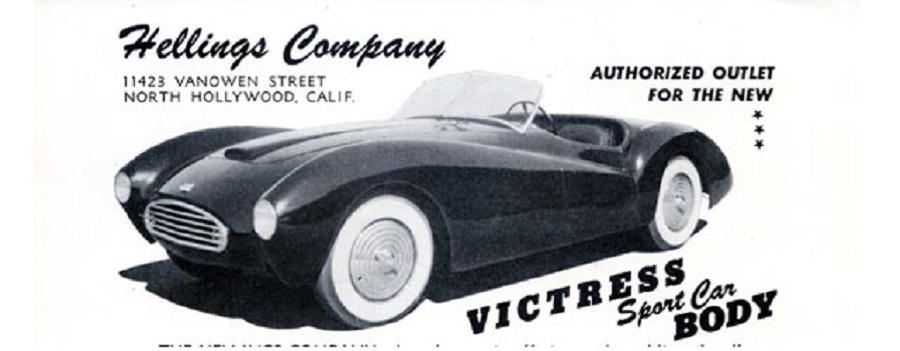
—————
Note: This is a multi-part story on the advertising, flyers, and brochures put out by Hellings in support of Victress sales. These primarily occurred when Hellings was the exclusive distributor for Victress in ’53 and early to mid ’54.
Click here to review all of Hellings Company flyers and sales literature
Click here to review all stories related to Hellings and Victress
——————–
Hi Gang…
Who doesn’t love history? And researching history and “connecting the dots” for the first time….what great fun it is to do and share here on Forgotten Fiberglass
Today we’re featuring two versions of a “Hellings Company” brochure – the only 2 copies we’ve found so far, so these are pretty rare gang. I’ve talked about the “Johnny Dark Victress” built by Hellings in a few stories. Click here to review more about this special car and its history.
The car shown in both versions of this brochure is this same “movie car” Victress which was finished in May/June of ’53. This dates the brochure sometime in late summer of ’53 and beyond.
The first brochure says at the top:
“Hellings Company Announces Appointment As Authorized Outlet For The New Victress Sports Car Body”
The second version, although similar in many respects, shows a shorted version, as follows:
“Hellings Company Authorized Outlet For The New Victress Sport Car Body”
Since both brochures only show the Victress with no mention of the movie (Johnny Dark) the car appeared in, it’s a safe bet that both of these were produced before the movie was filmed – and most likely before it was released in June ’54. In fact, the second brochure has a date on the back – June 11, 1954. Clues, clues, clues…
Let’s review each brochure and some of the similarities and differences that exist.
Early Hellings Company Brochure:
Both brochures contain the following overview:
The Hellings company takes pleasure in offering to the public – the all new Victress Sport Car Body – one of the most beautiful and up-to-date designs that has been offered anywhere in the world! Our main objective is to make it possible for the average sport car enthusiast to build his own sport car for about $1000.
In other words, a satisfactory chassis of 1940 vintage can be purchased for about $100 and added to the price of a Victress sport body means that for an investment of about $800 you can have the basic components required for your nifty sport car you have wanted to build.
These are important points. In 1953, if you wanted an affordable American sports car you were plain out of luck. If you wanted a Corvette – they were barely available in ’53 with just over 300 being produced. This means….
“if you wanted to buy American… you had to build American”
That’s the legacy of the ‘50s fiberglass sports car companies we are focusing on here – as in Victress.
Let’s see what the brochure said about “how” Victress bodies were built:
Construction:
Body and panels (hood, deck, doors) are of 3/16 inch thick laminated fiberglass. All parts are untrimmed. There is about one and one-half inches of material to be trimmed off which is easily done with a hacksaw or rotary saw, plus a little sanding.
Metal angles are already bonded into the body which provides means for attaching to chassis. The body fits over the frame and not on the frame which means that the body is not dependent on any certain shape or contour of the frame rails. The body is made for 102” wheelbase but one inch either way seems to work out very well.
This is a shell – no structure is included. Net weight of body is 175 pounds.
It’s interesting to read about the body being “untrimmed” here in ’53. I’ll see if Merrill Powell has some comments to add about that. I believe this changed with a new technique they added during the “curing” process but Merrill will have more detail here to share.
Hardware:
Some builders may prefer to make their own hardware so none is included with the Victress Sport Car body, but may be purchased separately. Prices on hardware will be quoted on request. Hinges for doors, rear deck andhood; grills, grill frames, windshield brackets, and door latches are available from stock.
Prices:
Prices varied from $570 with hood and trunk but no doors, to the mid-price kit at $595 with just one door. If you ordered the deluxe kit for $620 you got doors – but they were not hinged – that work was left up to you.
The early brochure is printed 2-sided. Hellings used the back side of the brochure to advertise other products. But those of you with keen eyesight should look carefully on the upper right corner of page 2. If you do, you’ll be rewarded by seeing another version of the Hellings Victress inviting the customer to turn the page and check out that cool Victress S1 Roadster!
Later Hellings Company Brochure:
Here are some of the changes from the early to the later Hellings brochure:
- The kit now included all necessary cloth, mat, resin, and instructions for bonding hinges – at no additional cost
- Hardware prices were now clearly spelled out and identified
- A hard top was not available for $85 and a grill frame too (front grille? Merrill…can you help here?)
- Alternative MG door latches were suggested – I assume for the doors.
- Prices increased in about a year. All Victress Sports Car Bodies now had at least one door, but the rear deck/trunk was optional
Interesting, this later brochure says that the hood, doors, and deck are cut out, trimmed, and complete with inside stiffeners – ready to hinge. But the “hinges” were still fiberglassed in by the customer during their “build.” It will be interested to see what Merrill Powell has to share about this issue.
Also, the back of this brochure is dated June 11, 1954. Hellings was still working with Victress into ’54 and perhaps later. However, when Merrill Powell joined in late ’53, the Boyce-Smith Company soon became “Victress Manufacturing” and while Hellings continued to sell Victress products, Victress also sold bodies directly to the public.
Within a short period of time, Bob Stelling would take the reins over at “Hellings” and Virgil Rice as their manager would exit and begin the next part of his career in the automotive world.
Summary:
We’ll feature more of the Hellings legacy with Victress here at Forgotten Fiberglass in the near future.
Hope you enjoyed the story, and until next time…
Glass on gang…
Geoff
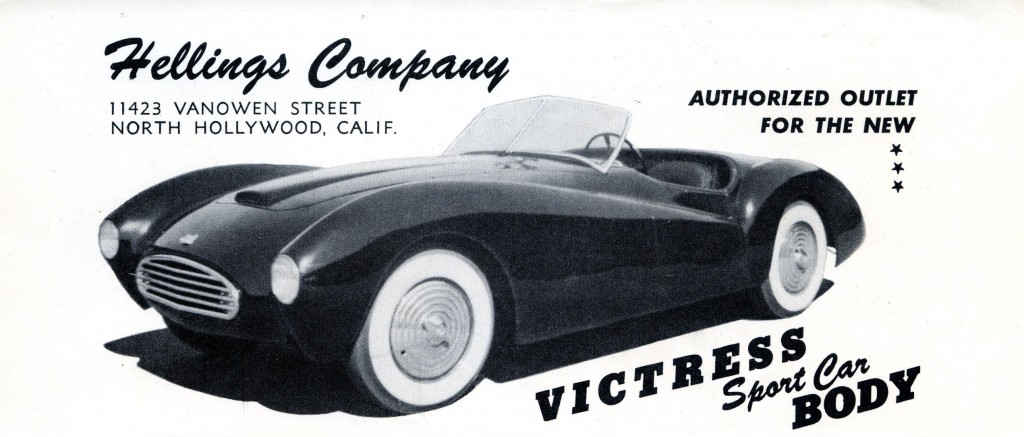
——————————————————————-
Click on the Images Below to View Larger Pictures
——————————————————————-

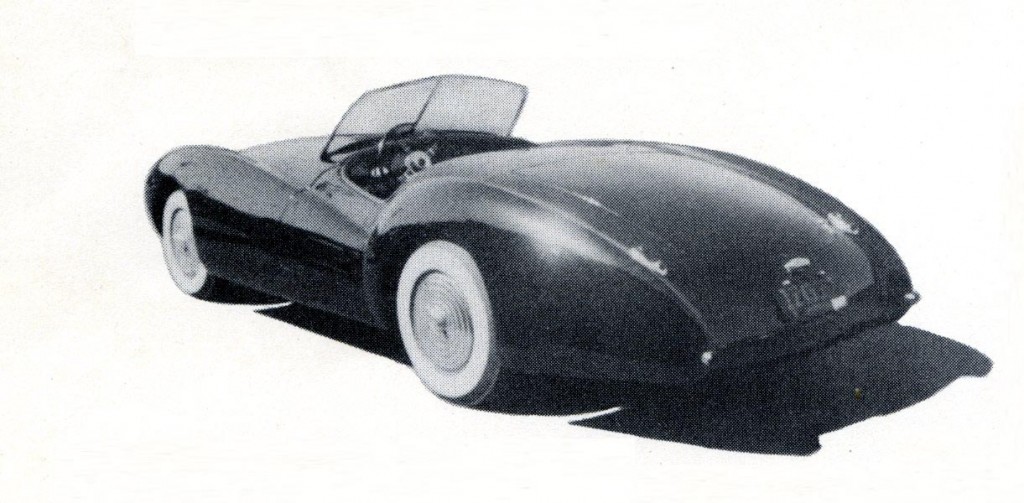
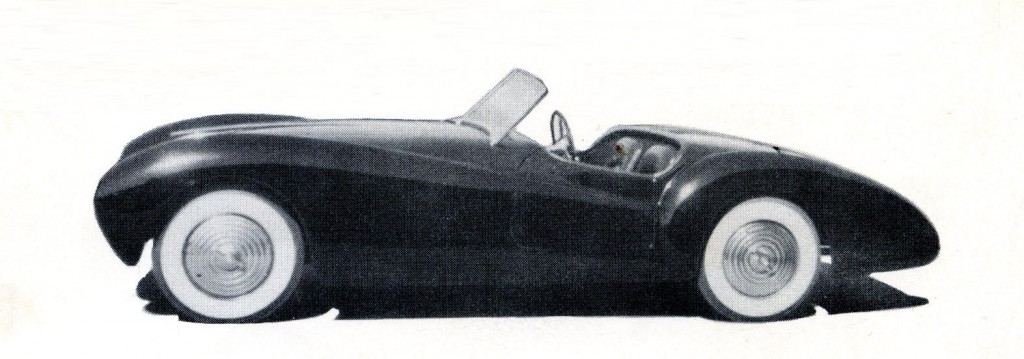
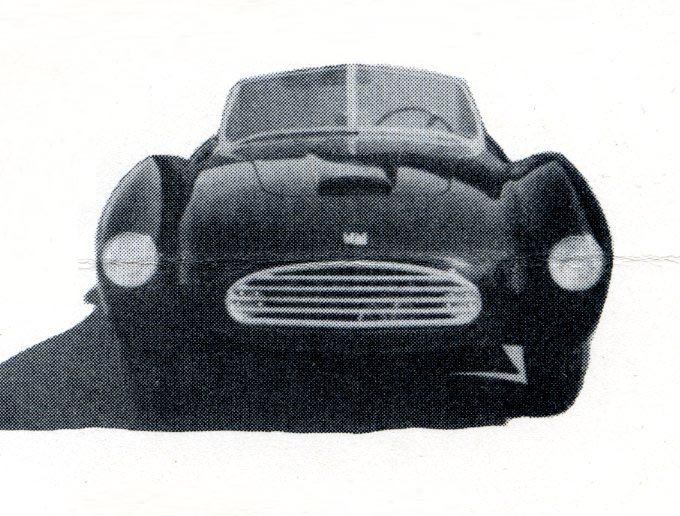
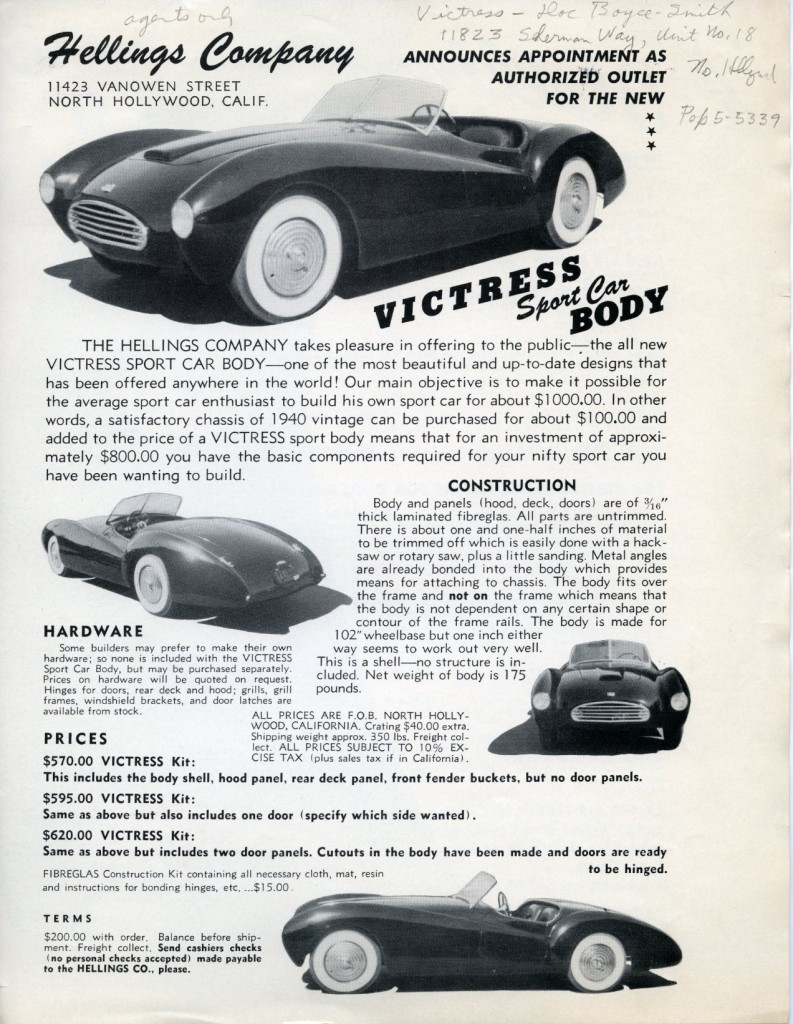
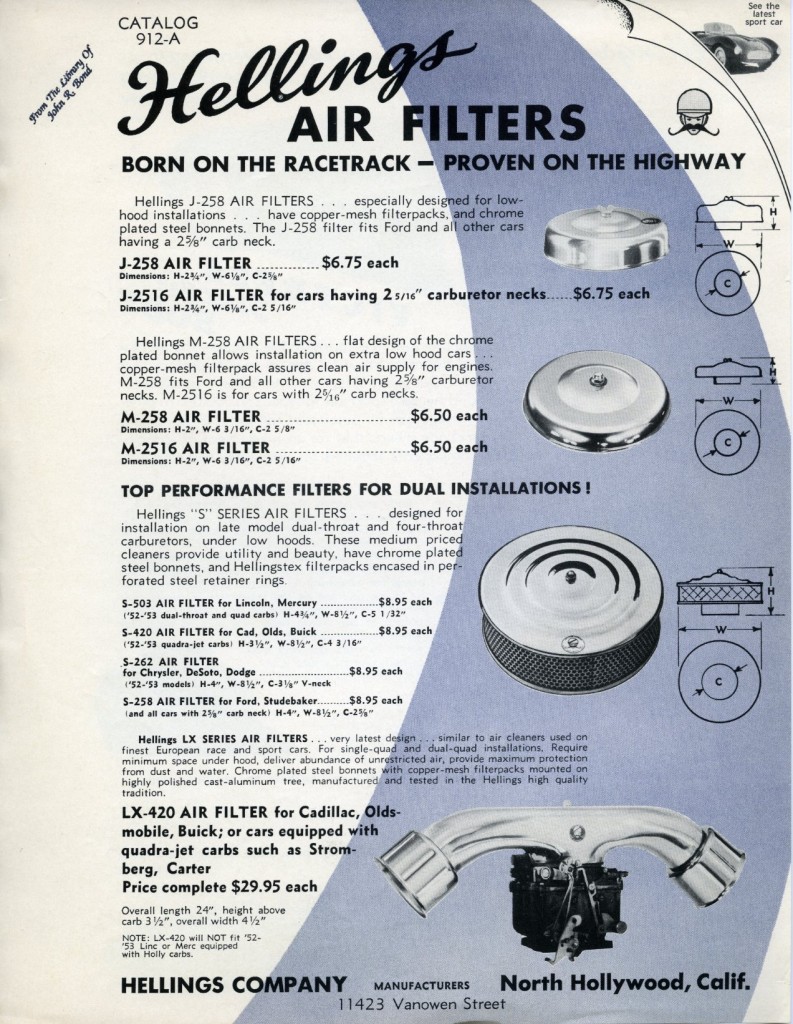
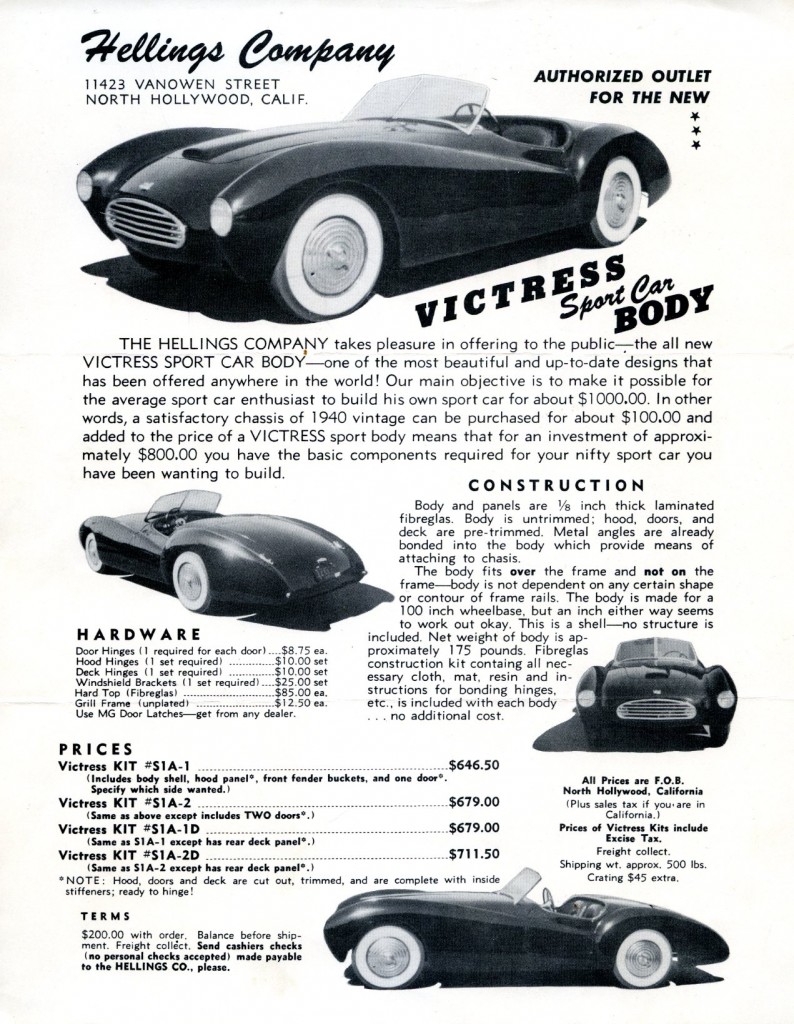

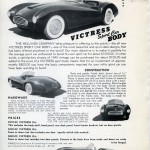
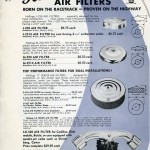
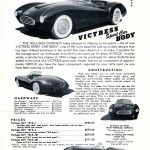
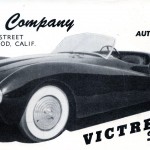
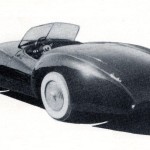
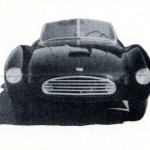
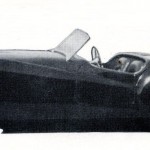
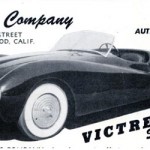
Thank you Merrill, it means so much to all of us when someone like yourself who was intimately involved in the process, reminisces. It is clear that many of the techniques we use today like trimming with a utility knife when the glass has reached that magic point between liquid and cure to take off those killer sharp edges. Takes us all back to a time, that I for one can easily imagine in my mind.
When I first started volunteering at Victress (The Boyce-Smith Company) in the Fall of ’53, I believe all hardware sold by Hellings was fabricated by Hellings. Virgil Rice’s car had hinges made from steel tubing (Geoff has pictures). One of my first tasks was to finish the casting patterns for the aluminum door hinges for the S-1A; the dog-leg hood hinges were already available. It’s interesting to note that the first Hellings brochure says the bodies are 3/16 inch thick; the second brochure says 1/8 inch. In open areas the cloth-matte-cloth laminates were a scant 1/8 inch. All edges were reinforced with additional material as required for strength.
Regarding the bodies being untrimmed: When I arrived on the scene, the “flashing”, a nasty raw edge of excess cloth and matte, guaranteed to cut fingers and introduce splinters, was being cut off with a coping saw. I introduced, through Hugh Jorgenson, the use of the Stryker cast-cutter, an oscillating tool used to remove plaster casts in orthopedic clinics; I reasoned that if the circular aluminum blades could cut something as abrasive as plaster, that it could cut glass laminate, so that speeded up the task of trimming the bodies immeasurably. We also used the cast-cutter to cut hood, deck, and door openings. A great benefit was that it wouldn’t cut skin, unless you really tried!
Later, someone told us about a marvelous technique called gel-trimming; as the catalyzed resin goes from liquid to solid state it passes through a jelly-like state. At the right moment the “flashing” can be cut away with a standard utility knife; the glass fibers are held semi-rigidly by the gelled resin, so that a sharp blade can slice cleanly through, using the mold edge as a guide. Cutting too soon will create a frayed edge; wait too long and the saw is required. Care must be used to avoid cutting the mold.
It is interesting to note that the second brochure makes no mention of the land-speed record set at Bonneville by the Guy Mabee Special (the first would have been too soon). It may have been printed too early to report that feat.